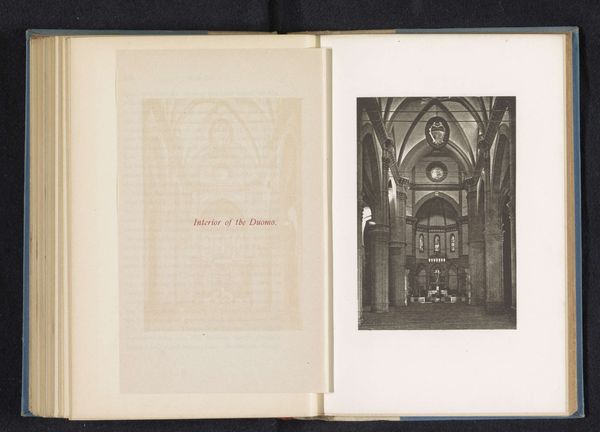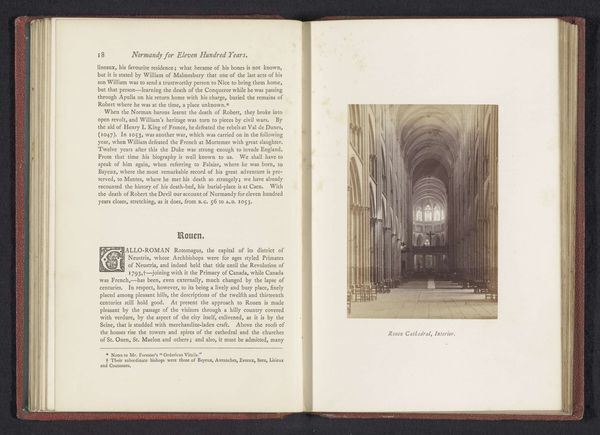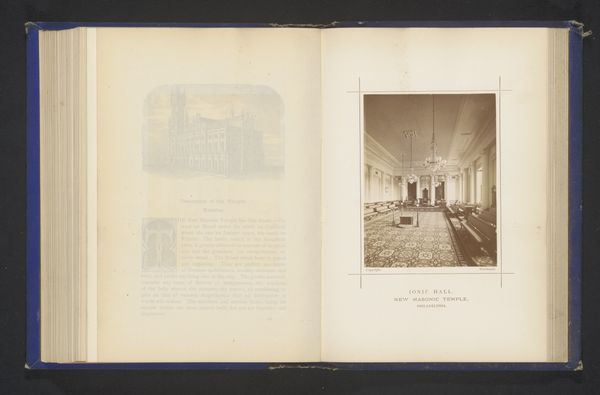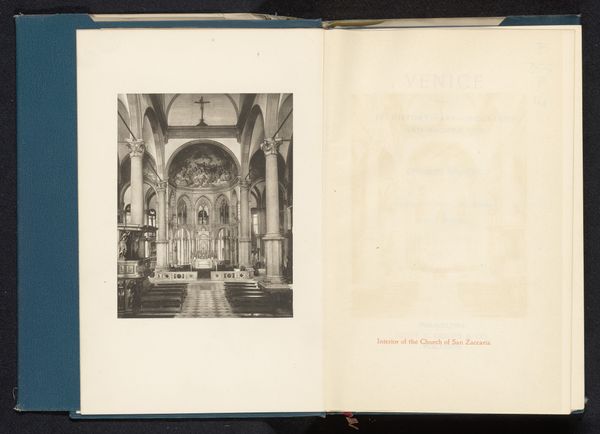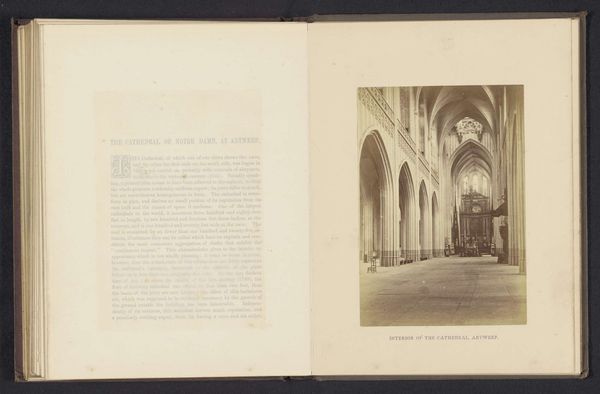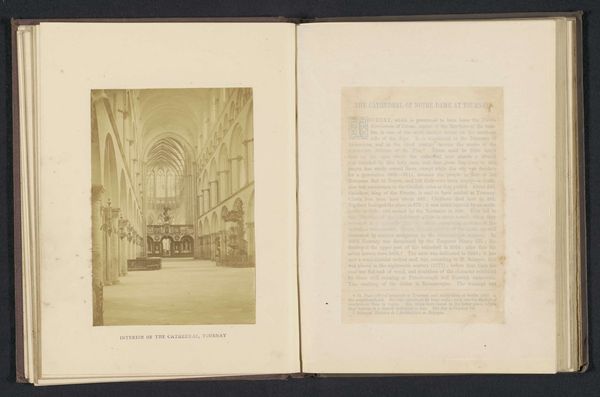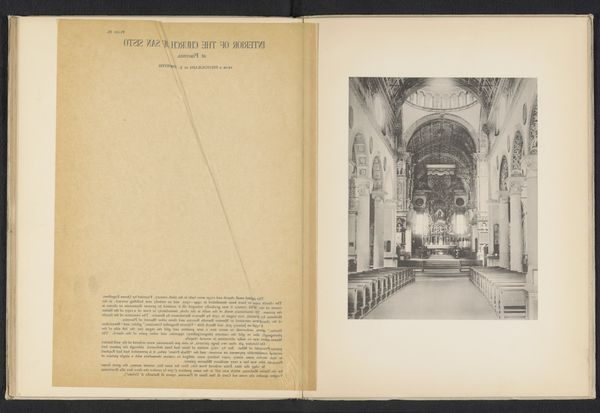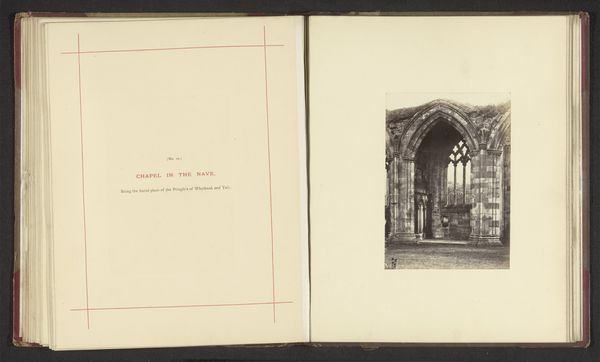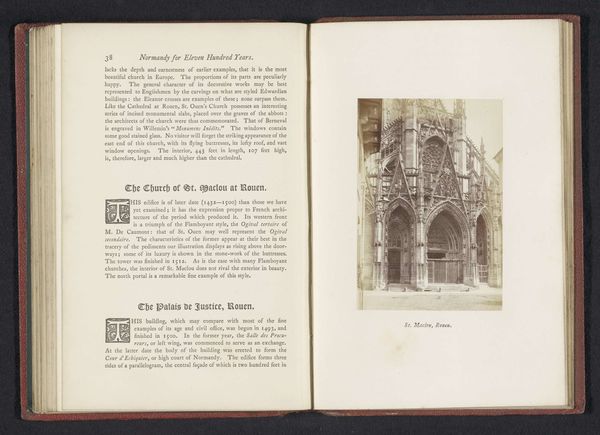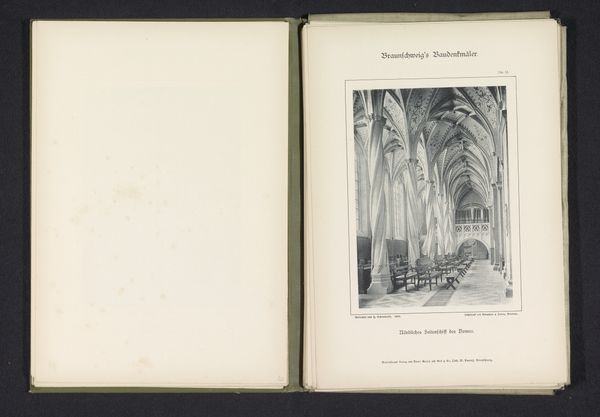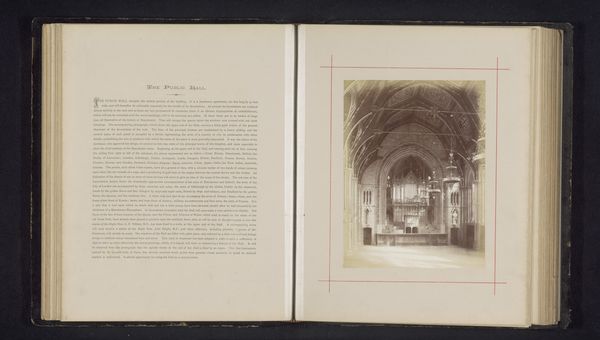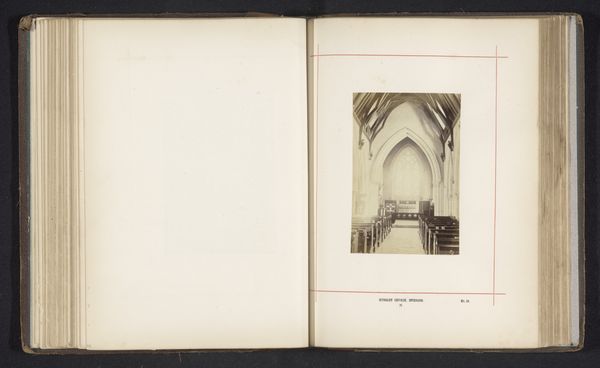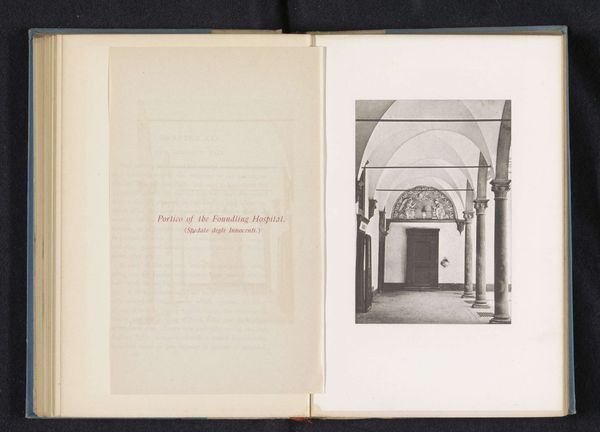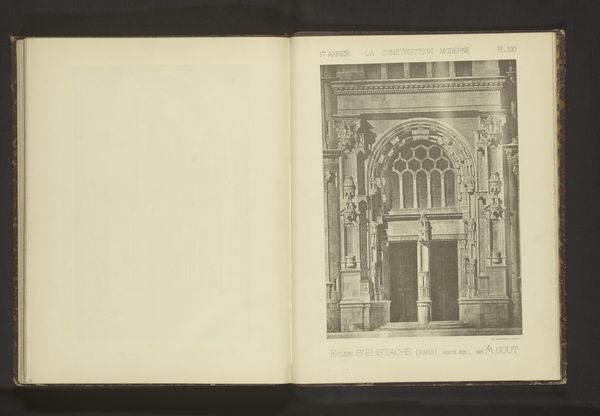
print, photography, architecture
# print
#
landscape
#
photography
#
romanesque
#
cityscape
#
italian-renaissance
#
architecture
Dimensions: height 113 mm, width 88 mm
Copyright: Rijks Museum: Open Domain
Curator: This fascinating image captures the interior of the Santa Croce in Florence, likely dating to before 1890. The photograph presents a compelling study of architectural space. Editor: It has an air of almost theatrical grandeur. The high ceilings and towering windows feel dramatic, almost staged. There's a certain silence, or anticipation of sound—the kind of vast space that amplifies even a whisper. Curator: Precisely. Notice how the photographer uses light and shadow to emphasize the inherent structure—the soaring Gothic arches and rhythmic columns—drawing our eyes upward and inward toward the apse. It's a carefully constructed composition, highlighting verticality and linear perspective. Editor: Absolutely. And yet, that deliberate structure also suggests the overwhelming power structures inherent in the church, historically and contemporarily. Santa Croce isn't just a pretty building; it’s a repository of Florentine history, enshrining the remains of figures who benefited directly and indirectly from systems of wealth and political inequity. Does the photograph allow space to ask, whose voices are amplified, and whose are silenced in this magnificent space? Curator: A valid question. We see here a printed photographic rendering and in observing the balance and order within the image, its composition encourages a focus on form and arrangement over time-bound issues. There's also an interesting interplay of textures here. The coldness of the stone balances against the ephemeral light streaming through the windows. Editor: Light often operates as a visual metaphor for divine authority in art, right? Considering the legacy of colonialism linked to Christian missions, is this merely an aesthetic observation or an active commentary on its use? Are we examining light, or considering its symbolic significance within an exploitative paradigm? Curator: I concede there are multiple readings of the art piece, each of them revealing and worthy of conversation. Editor: And ultimately, whether we see a stage, a sanctuary, or a site of complex power dynamics, “Interieur van de Santa Croce” remains a potent invitation to question the spaces we inherit and to reflect on who has the power to design them.
Comments
No comments
Be the first to comment and join the conversation on the ultimate creative platform.
